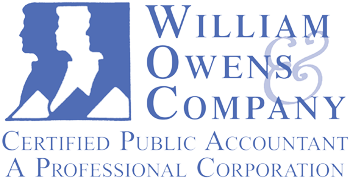
Creating a financial forecast for your small business is an essential step in ensuring long-term success and sustainability. A well-crafted financial forecast allows you to predict future revenue, manage cash flow, and make informed decisions. Yes, this important task is often ignored by business owners because they aren’t sure how to do it. Your CPA can help you to create a financial forecast. But in the meantime, here’s a guide to help you both understand its importance and what steps are needed.
Understanding Financial Forecasting
What is meant by financial forecasting? Financial forecasting involves predicting your business’s future financial performance based on historical data, market trends and economic conditions. There are two main types of financial forecasts: short-term and long-term. Short-term forecasts typically cover a period of one year, while long-term forecasts can extend up to five years or more. Note that financial goals are not a part of accurate financial forecasting. This is all about facts, not hopes.
Gathering Historical Data
The first step in creating a financial forecast is to gather historical financial data. This includes your income statements, balance sheets, and cash flow statements from previous years. Many business owners go back from the date of founding, but five years is sufficient. If your business is brand new and lacks historical data, you can use industry benchmarks and market research to estimate your starting figures.
Identifying Key Assumptions
Financial forecasts rely on a set of key assumptions about your business and the market. Your CPA can help you come up with these, but they typically include:
-
Expected sales growth rates
-
Pricing strategies
-
Cost of goods sold (COGS)
-
Operating expenses
-
Market trends and economic conditions
As with everything else, document these assumptions clearly, as they will form the foundation of your forecast.
Projecting Revenue
Revenue projection is another critical component of your financial forecast. Start by estimating your sales volume for the forecast period. Consider factors such as market demand, competitive landscape and your marketing strategies. Multiply the estimated sales volume by your average selling price to calculate your projected revenue.
For instance, if you expect to sell 10,000 units of your product at an average price of $50 per unit, the calculation of your projected revenue would be:
Projected Revenue=10,000 units×$50/unit=$500,000
Estimating Costs
Next, calculate the various costs of doing business.
Cost of Goods Sold (COGS)
COGS includes all direct costs associated with producing your product or service. This may include raw materials, labor, and manufacturing overhead. Use historical data or industry benchmarks to estimate your COGS.
Operating Expenses
Operating expenses encompass all other costs required to run your business, such as rent, utilities, salaries, marketing, and administrative expenses. Categorize these expenses and estimate their values based on past data or market research.
Variable and Fixed Costs
Differentiate between variable costs (which fluctuate with production volume) and fixed costs (which remain constant regardless of production levels). This distinction will help you understand how changes in sales volume affect your profitability.
Creating Financial Statements
With your revenue and cost estimates in place, you can now create pro forma financial statements. Of course, this is something that your CPA will provide for you. These statements include:
Income Statement
The income statement summarizes your projected revenue, COGS, operating expenses, and net income. It provides an overview of your business’s profitability over the forecast period.
Net Income = Revenue − COGS − Operating Expenses
Balance Sheet
The balance sheet projects your business’s financial position at the end of the forecast period. It includes assets, liabilities, and equity. Use historical data and your financial assumptions to estimate these figures.
Assets = Liabilities + Equity
Cash Flow Statement
The cash flow statement projects your cash inflows and outflows, helping you manage liquidity. It includes cash from operations, investing activities, and financing activities.
Net Cash Flow
Net cash flow represents the difference between a company's cash inflows and outflows over a specific period. It reflects the amount of cash generated or lost from operating activities, investing activities, and financing activities. Positive net cash flow indicates more cash coming in than going out, suggesting good liquidity, while negative net cash flow signals the opposite, potentially indicating financial challenges.
Net Cash Flow = Cash Inflows − Cash Outflows
Analyzing Financial Ratios
Financial ratios provide insights into your business’s performance and financial health. Key ratios to consider include:
Profit Margin
The profit margin measures your profitability as a percentage of revenue.
Profit Margin = (RevenueNet Income) ×100
Current Ratio
The current ratio assesses your ability to meet short-term obligations.
Current Ratio = Current Liabilities/Current Assets
Debt-to-Equity Ratio
The debt-to-equity ratio evaluates your business’s leverage.
Debt-to-Equity Ratio = Equity/Total Liabilities
Adjusting for Uncertainty
Financial forecasts are inherently uncertain, so it’s essential to consider different scenarios. Your CPA can create multiple forecasts based on best-case, worst-case, and most likely scenarios. This approach allows you and your financial team to prepare for various outcomes and develop contingency plans.
Reviewing and Updating Your Forecast
A financial forecast is not a one-time exercise. Regularly review and update your forecast to reflect changes in your business and the market. This ensures that your financial plan remains relevant and accurate.
Creating a financial forecast for your small business is a crucial step in planning for growth and sustainability. By gathering historical data, identifying key assumptions, projecting revenue and costs, and creating financial statements, you can develop a comprehensive forecast. Regularly review and update your forecast to stay on track and make informed decisions. With a solid financial forecast, you’ll be better equipped to navigate the challenges and opportunities that lie ahead. Contact your CPA today to learn more.
by Kate Supino
